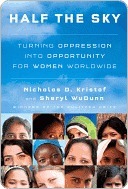More on this book
Community
Kindle Notes & Highlights
What would men be without women? Scarce, sir, mighty scarce. —MARK TWAIN
Meena is an Indian Muslim who for years was prostituted in a brothel run by the Nutt, a low-caste tribe that controls the local sex trade. The Nutt have traditionally engaged in prostitution and petty crime, and theirs is the world of intergenerational prostitution, in which mothers sell sex and raise their daughters to do the same.
There are 2 to 3 million prostitutes in India, and although many of them now sell sex to some degree willingly, and are paid, a significant share of them entered the sex industry unwillingly.
China has more prostitutes than India—some estimates are as high as 10 million or more—but fewer of them are forced into brothels against their will.
Paradoxically, it is the countries with the most straitlaced and sexually conservative societies, such as India, Pakistan, and Iran, that have disproportionately large numbers of forced prostitutes. Since young men in those societies rarely sleep with their girlfriends, it has become acceptable for them to relieve their sexual frustrations with prostitutes.
breast-feeding—customers dislike prostitutes who are lactating—and
She breaches the pattern of femininity in rural India by talking back—and fighting back.
The term that is usually used for this phenomenon, “sex trafficking,” is a misnomer.
In many countries—China, Brazil, and most of sub-Saharan Africa—prostitution is widespread but mostly voluntary (in the sense that it is driven by economic pressure rather than physical compulsion).
A UN report estimated that 1 million children in Asia alone are held in conditions indistinguishable from slavery.
An essential part of the brothel business model is to break the spirit of girls, through humiliation, rape, threats, and violence.
between 600,000 and 800,000 people are trafficked across international borders each year, 80 percent of them women and girls, mostly for sexual exploitation.
“Whatever the exact number is, it seems almost certain that the modern global slave trade is larger in absolute terms than the Atlantic slave trade in the eighteenth and nineteenth centuries was.”
Capitalism created new markets for rice and potatoes, but also for female flesh.
“These girls are sacrificed so that we can have harmony in society. So that good girls can be safe.” “But many of the Nepali girls being trafficked are good girls, too.” “Oh, yes, but those are peasant girls. They can’t even read. They’re from the countryside. The good Indian middle-class girls are safe.”
People get away with enslaving village girls for the same reason that people got away with enslaving blacks two hundred years ago: The victims are perceived as discounted humans.
They argue instead for a legalize-and-regulate model based on empowerment of sex workers, and they cite a success: the Sonagachi Project.
And the girls, once raped, frequently resign themselves to being prostitutes until they die.
Some degree of prostitution will probably always be with us, but we need not acquiesce to widespread sexual slavery.
prostitutes are neither acting freely nor enslaved, but living in a world etched in ambiguities somewhere between those two extremes.
We may not succeed in educating all the girls in poor countries, or in preventing all women from dying in childbirth, or in saving all the girls who are imprisoned in brothels.
Stoic docility—in particular, acceptance of any decree by a man—is drilled into girls in much of the world from the time they are babies,
Education and empowerment training can show girls that femininity does not entail docility, and can nurture assertiveness so that girls and women stand up for themselves.
More broadly, the single most important way to encourage women and girls to stand up for their rights is education,
The woman inserts it like a tampon, with an applicator, and any man who tries to rape the woman impales himself on the barbs and must go to an emergency room to have the Rapex removed.
Surveys suggest that about one third of all women worldwide face beatings in the home. Women aged fifteen through forty-four are more likely to be maimed or die from male violence than from cancer, malaria, traffic accidents, and war combined.
sexism and misogyny. How else to explain why so many more witches were burned than wizards?
Of all the things that people do in the name of God, killing a girl because she doesn’t bleed on her wedding night is among the most cruel.
Frequently the Congolese militias rape women with sticks or knives or bayonets, or else they fire their guns into the women’s vaginas. In one instance, soldiers raped a three-year-old girl and then fired their guns into her.


